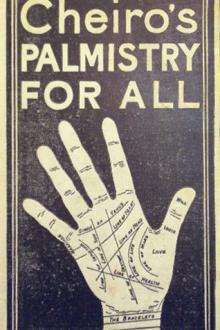The Diary - Samuel Pepys (red white and royal blue hardcover txt) 📗

- Author: Samuel Pepys
Book online «The Diary - Samuel Pepys (red white and royal blue hardcover txt) 📗». Author Samuel Pepys
A comedy, Evening’s Love, or the Mock Astrologer, not published until 1671. The scene was at Madrid, and the time the last evening of the Carnival in 1665. ↩
See February 24th, ante. ↩
H. Herringman, a printer and publisher in the New Exchange. See August 10th, 1667, ante. —B. ↩
June 22nd. At a meeting of the Council
“Mr. Hoskyns reported, that he had conferred with Mr. Henry Howard concerning the security of the ground given by him to build upon; and that Mr. Howard was wilhng to enter into a bond of six thousand pounds for performance of covenants forthwith, and into another of six thousand pounds more, that he would within a twelvemonth either procure an act of parliament to enable him to make estates of the ground belonging to Arundel House notwithstanding the act of 3 Car. I that had intailed it; or other good and indefeasible title for the society, or else give them collateral security by conveying land to them.”
Birch’s History of the Royal Society, vol. ii, pp. 299–300↩
Daubigny Turberville, of Oriel College; created M.D. at Oxford, 1660. He was a physician of some eminence, and, dying at Salisbury on the 21st April, 1696, aged eighty-five, he was buried in the cathedral, where his monument remains. Cassan, in his Lives of the Bishops of Sarum, part iii, p. 103, has reprinted an interesting account of Turberville, from the Memoir of Bishop Seth Ward, published in 1697, by Dr. Walter Pope. Turberville was born at Wayford, co. Somerset, in 1612, and became an expert oculist; and probably Pepys received great benefit from his advice, as his vision does not appear to have failed during the many years that he lived after discontinuing the Diary. The doctor died rich, and subsequently to his decease his sister Mary, inheriting all his prescriptions, and knowing how to use them, practised as an oculist in London with good reputation. —B. ↩
To the Strand. ↩
“His Majesty and Prince Rupert returned to town the day before, after viewing the Fleet in the Downs, and the new fortifications at Sheerness.”
The London Gazette, No. 273—B. ↩
Hugh May. ↩
George Thomson, John Gregory, Giles Dunster, Henry Osborne, not Sir Thomas Osborne, as stated in former editions. See list of Commissioners, vol. vii, p. 256. ↩
Lord Halifax’s mother was Anne, sister of Sir John and Sir William Coventry, and of Harry Coventry. She married, secondly, Sir Thomas Chichele, or Chicheley, of Wimpole, in Cambridgeshire, Master of the Ordnance, which circumstance explains many allusions made by Pepys. —B. ↩
Thomas Waldron matriculated at Balliol College in 1634, when he was fifteen years of age; created M.D. at Oxford, 1653; afterwards Physician in Ordinary to Charles II. He died February 5th, 1676–77, and was buried in Westminster Abbey. ↩
Richard Lower, a Cornishman, educated at Westminster School, whence he was elected a student of Christ Church, Oxford; B.A., 1653 M.A., 1655; M.D., 1665; F.R.S., 1667. He became the most noted physician in London, and died at his house in King Street, Covent Garden, January 17th, 1690–91. ↩
Almoner to the Queen, whose character was drawn in dark colours by Clarendon. ↩
It is probable these stories, in ridicule of Clarendon, are nowhere recorded. Cardinal Jean Balue was the minister of Louis XI of France. The reader will remember him in Sir W. Scott’s Quentin Durward. He was confined for eleven years in an iron cage invented by himself in the Château de Loches, and died soon after he regained his liberty. —B. ↩
Gripes. It was a joke against Lord Cottington that whenever he was seriously ill he declared himself a Roman Catholic, when he was well again he returned to the Protestant faith. ↩
Ram Alley, on the south side of Fleet Street, opposite Fetter Lane, a privileged place for debtors, which bore a bad reputation. It gave its name to a comedy by Lodowick Barrey, published in 1611. The place is now named Mitre Alley. ↩
See April 27th and 30th, 1668, ante. ↩
See May 11th, ante. ↩
The bridge which connected Ludgate Hill with Fleet Street, and was destroyed in the Great Fire, was, according to Stow, built or repaired in 1431. The new Fleet Bridge was ornamented with pineapples and the City arms. It was taken down October 14th, 1765. ↩
There is a sulphurous spring in the town of Banbury, and a chalybeate spring a short distance from the town. ↩
The dispute between Matthew Poole and the publishers of the Critici Sacri is referred to in the Calendar of State Papers:
“Case of Cornelius Bee and his partners—booksellers, proprietors of the Critici Sacri in 9 vols. folio, being editions of eminent authors, published by them in 1660 at £13 10s., though the authors would cost £50 or £60, against Matt. Poole, who, in his projected Synopsis Criticorum, states that he intends to epitomise these with other critical works, which they remonstrate against as a violation of their privileges, and the more hard on them as 1,300 copies of the Critici Sacri were burned in the fire of London, to their loss of £13,000”
Calendar, 1667–68, pp. 515, 516↩
Never printed. ↩
A perspective glass. ↩
See February 21st,





Comments (0)